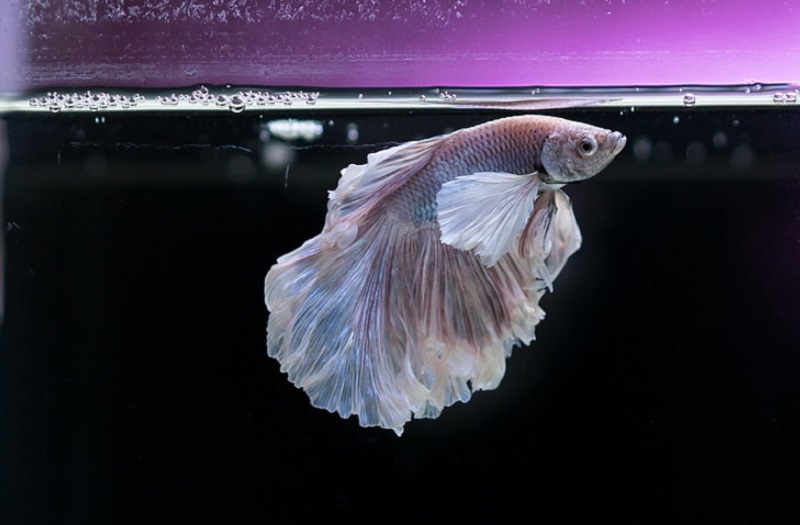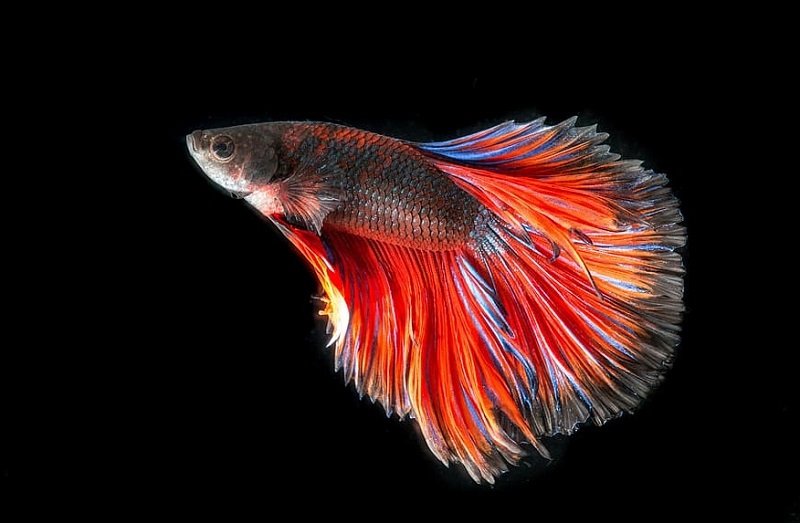Betta fish, scientifically known as Betta splendens, are captivating aquatic creatures revered for their vibrant colors and unique personalities. Originating from Southeast Asia, these labyrinth fish possess a labyrinth organ, enabling them to gulp air from the water’s surface, allowing them to survive in oxygen-depleted environments. Despite their hardy nature, misconceptions about their care have led to inadequate living conditions, particularly in small bowls or containers. This guide aims to debunk these misconceptions and provide comprehensive insights into maintaining betta fish health and well-being in a bowl setup.
The Fascinating World of Betta Fish
Betta fish, often nicknamed Siamese fighting fish, showcase an average lifespan of 2-4 years under suitable conditions. However, with proper care, a well-maintained environment, and balanced nutrition, their lifespan can extend beyond 5 years. Their colorful, flowing fins and intriguing behavior make them popular pets, but understanding their natural behaviors and habitat is crucial for creating an optimal living space.
Lifespan of a Betta Fish in a Bowl
Numerous factors influence a betta fish’s lifespan in a bowl environment. While they can survive in smaller spaces, larger tanks or bowls (preferably 5 gallons or more) significantly contribute to their well-being and longevity. Factors such as stable water parameters, proper filtration, heating systems, and a balanced diet all play pivotal roles in extending their lifespan beyond the average.
Betta Fish Bowl Care: Essential Guidelines for Healthy Maintenance
Caring for a betta fish in a bowl requires attention to specific details to ensure the fish’s health and well-being. While bettas can survive in bowls, they thrive better in larger tanks with proper filtration and heating. Here are steps to care for a betta fish in a bowl:
- Bowl Size: Opt for the largest bowl possible, preferably at least 2.5 gallons. The more water volume, the better it is for your betta.
- Water Quality: Change 20-30% of the water every week. Use a water conditioner to remove harmful chemicals like chlorine and chloramine. Bettas are sensitive to water quality, so regular water changes are essential.
- Filtration: Bowls usually lack filtration, so you’ll need to manually clean the water. Consider adding a small, gentle filter if possible to maintain water quality.
- Heating: Bettas are tropical fish and need water temperatures between 75°F and 82°F (24°C to 28°C). Use a small heater to maintain a consistent temperature.
- Decoration: Include live or silk plants and decorations, but ensure they have no sharp edges that can tear the betta’s delicate fins. Bettas appreciate places to hide and explore.
- Feeding: Feed your betta high-quality betta-specific pellets or flakes, and occasionally treat them with frozen or live food like bloodworms or brine shrimp. Feed them small portions once or twice a day, only what they can consume in a few minutes.
- Observation: Monitor your betta’s behavior regularly. Look for signs of illness like loss of appetite, lethargy, or changes in color. Quarantine a sick fish to prevent the spread of disease.
- Avoid Overfeeding: Overfeeding can lead to health issues and poor water quality. Stick to a feeding schedule and provide only the recommended amount of food.
- Regular Cleaning: Aside from regular water changes, periodically clean the bowl, removing any uneaten food, waste, or debris that may accumulate.
- Avoid Overcrowding: Bettas are territorial and aggressive, especially males. Keep only one betta per bowl to prevent fighting.

How Do I know if my Betta Fish is Happy in Bowl?
Observing your betta fish’s behavior is key to understanding its happiness in a bowl. A happy betta fish displays vibrant colors, active swimming, and an energetic response during feeding times. They might build bubble nests, a sign of contentment and readiness to breed. Conversely, a stressed or unhappy betta might show signs like a faded coloration, reduced activity, or lethargy. They might also flare their gills frequently or stay hidden, indicating discomfort or stress. Monitoring their behavior and providing a well-maintained environment with suitable enrichment can significantly contribute to their happiness and well-being in a bowl setup.
Can a betta fish live in a bowl without a filter?
A betta fish can survive in a bowl without a filter, but it requires diligent maintenance. Filters play a significant role in maintaining water quality by eliminating debris and waste, yet they are often omitted in smaller bowl setups due to space limitations. However, the absence of a filter means that regular water changes become crucial—approximately 20-30% weekly—to prevent the accumulation of harmful substances like ammonia and nitrite. While a filter can assist in maintaining stable water conditions, consistent attention to water quality through regular maintenance is vital for ensuring the health and well-being of a betta fish in a bowl without filtration.
Conclusion
Caring for a betta fish in a bowl demands attention to detail and commitment to maintaining optimal conditions. While bettas can survive in bowls, their well-being thrives in larger tanks with proper filtration and heating. Key aspects such as appropriate bowl size, water quality maintenance, suitable decorations, regulated feeding, and vigilant observation of their behavior contribute significantly to their health and happiness.
Recognizing signs of contentment, such as vibrant colors, active swimming, and bubble nest building, versus indicators of stress or discomfort, aids in ensuring their overall well-being. While a filter is advantageous for water quality, regular water changes and diligent care are essential for a betta fish’s health in a bowl without filtration.

